In the quiet village of Mykolaivka, honey still flows from hives passed down through generations, though the shadow of war has left a deadly legacy. Landmines now line the fields where beekeeper Slavik’s Ukrainian Steppe Bees once danced freely from bloom to bloom. With each step and interrupted harvest, both people and pollinators are waiting to return to the quiet rhythms of rural life.
Thanks to the support of partners and donors, such as ADM Cares, John Deere Foundation, and Meta, that return is beginning. HALO Ukraine's Rachael Rosenberg takes us into the heart of Slavik's apiary to witness how landmines have disrupted Ukraine's ecosystem–and how clearance is creating a path for renewal.

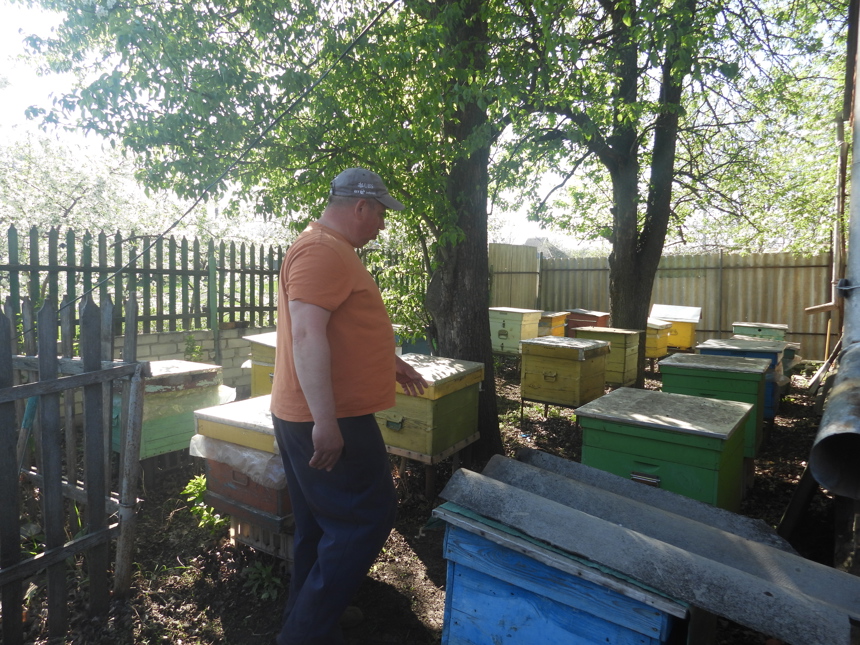
Slavik pictured with just some of the 26 beehives on his family's property. In early spring, each beehive may house as many as 15,000 bees.
“They might take an interest in your hair,” Slavik warned Rachael. She barely heard him, entranced by the harmony of buzzing that surrounded her the moment she stepped into the apiary. Everywhere Rachael looked, brightly colored boxes stood proudly, filled with honeycombs, while bees flitted busily from frame to frame in a vibrant symphony of chaos and order.
Just a stone’s throw away from all this buzzing productivity, lies arable farmland left unattended, choked by the threat of landmines and other explosive remnants of war.
Slavik lives in Mykolaivka, a village of just 51 people. From February to September of 2022, Russian forces occupied the village, laying tactical minefields to secure their positions. It wasn’t until September 9th, 2022 (during the Kharkiv counteroffensive) that Ukrainian troops reclaimed control. Shortly after, HALO's survey teams moved in, swiftly identifying the first minefields by November 2022.
Mykolaivka is nestled in the Chuhuiv district, one of Ukraine's most densely mined areas. Until the land is cleared, farmers and retirees are left unable to safely return to their homes, their livelihoods, or the rhythms of daily life.
Slavik’s bees, too, have felt the disruption of war. As pollinators, bees play an essential role in ecosystems around the world, and like all creatures, their routines have been thrown out of balance by landmines. Honeybees typically forage within a two-mile radius, seeking nectar from a variety of plants.
Before the war, the sunflower fields surrounding Mykolaivka were more than enough to keep Slavik’s bees busy each year, providing them with a steady source of nectar for the honey they rely on to survive the harsh winters.
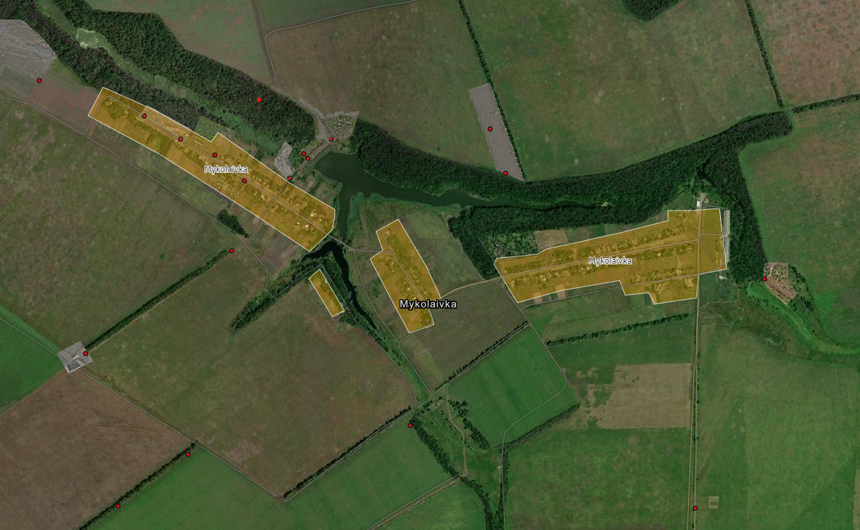
HALO has identified 30 minefields in and around Mykolaivka and already returned five of these areas to the local community.
Ukraine is the largest per capita honey producer in the world. Prior to the full-scale invasion, the country produced more than 68,000 metric tons of honey per year. But this dipped to just under 58,000 in 2023 due to the impact of the war on all forms of agricultural production and wildlife.
For over 70 years Slavik’s family has cared for bees, maintaining the same breed, the Ukrainian Steppe Bee, passed down through generations. This breed has been found by researchers at Vinnystia National Agrarian University to be stronger, more productive, and more resilient to winter weather than other varieties. But with many agricultural fields filled with remnants of war, even these hardy pollinators have been forced to search for alternative sources of nectar.
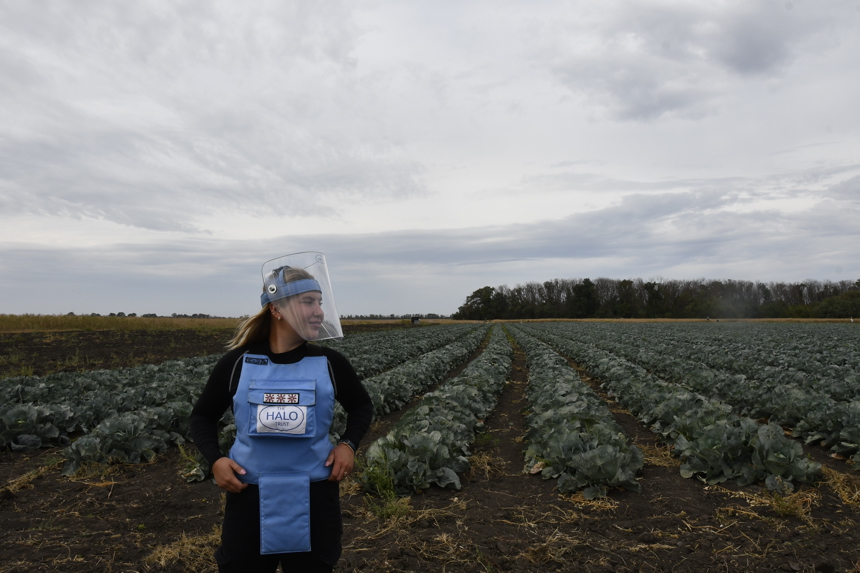
Above: Liliia, one of HALO’s operational management staff in Kharkiv oblast, is responsible for overseeing work at all of the minefields in this area. She stands at a point of contrast in Mykolaivka: part of a cabbage field where cultivation has resumed, while demining operations continue in the background to restore access to the rest. This small cabbage patch is one of the only agricultural pollination jobs available for Slavik’s bees.
After welcoming Rachael to his apiary, Slavik opened one of the hives, eager to show off the honey stores. "They usually produce more than enough honey to sustain themselves," he explained, “but we used to give them sugar syrup as a supplement. The price of sugar has gone up, so now we take less honey to make sure they have enough to get through the winter.”
With fewer sunflowers, rapeseed, and other crops available to pollinate, Slavik has taken a more cautious approach to caring for his bees. It’s a delicate balance, but he’s determined to keep his bees healthy and thriving. While large-scale beekeepers often move their hives between different crops to produce a variety of honeys, Slavik’s family operation is small.
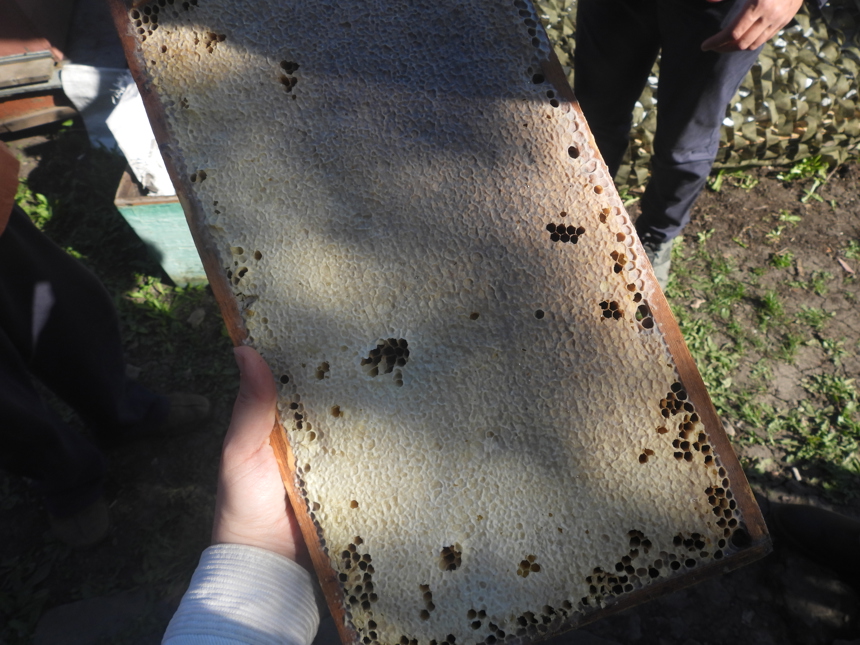
One of the honeycomb frames provides physical evidence of the change in nectar sources due to the mining of agricultural fields.
Holding up a frame filled with honeycomb, Slavik pointed to the older honey cells. “You can see the difference,” he said, tracing a finger along the lighter honey in the cells that were filled first. “But over time, the honey became darker.”
Scientists have long studied the communication skills of bees. When bee scouts return to the hive after finding a new source of nectar, they communicate its geolocation to the other bees by moving their bodies in what is called a waggle dance. This behavior helps to explain how Slavik’s bees have adapted to the change in their environment.
Slavik’s theory is that, since sunflowers, rapeseed, and other common sources are not available in sufficient quantities, his bees have been forced to take their nectar from wild plants, such as wild mustard greens, and various weeds growing in fallow fields, on the side of the road, and in people’s yards. These bees are highly adaptable, and even amidst these changed circumstances, they seem to thrive. But without the bumper crops of sunflowers and rapeseed, the once-perfect balance between humans, bees, and crops has been disrupted. Slavik’s family farm, and others like it, have had to adjust.
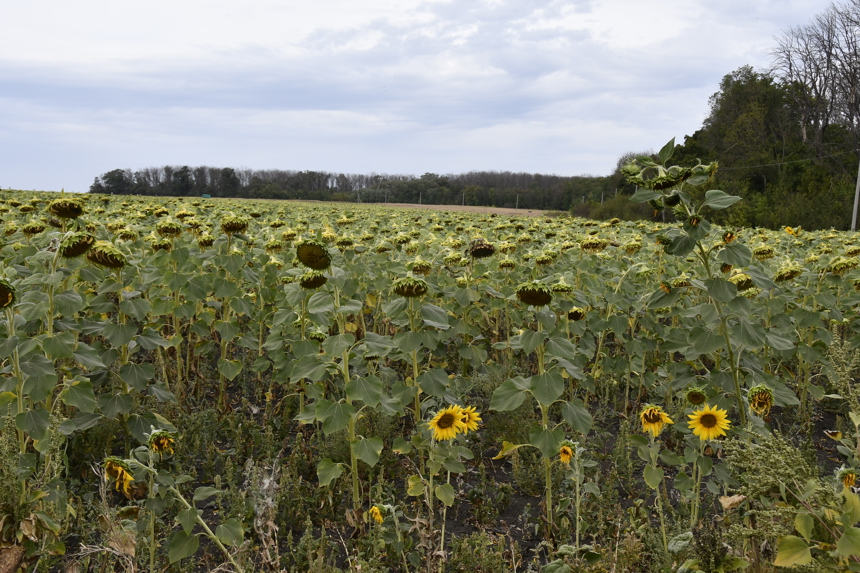
The 2024 sunflower crop in Mykolaivka was much smaller than before the war. This field stands directly next to a minefield where HALO deminers are working.
Thanks to the support of HALO partners, HALO Ukrainian deminers are slowly but surely restoring the agricultural landscape in Mykolaivka and in seven different Oblasts. As of May 2025, HALO has cleared five minefields in Mykolaivka and is working to completely clear two additional minefields.
Slavik thinks the honey will return to its previous hue and taste. He invited HALO to return later this year to open another beehive and sample the honey gathered. Slavik maintains a sense of hope and anticipation, knowing that this delicate symbiotic relationship between humans, bees, and the land is on the mend.
A sweet step forward for Ukraine’s agricultural recovery.




